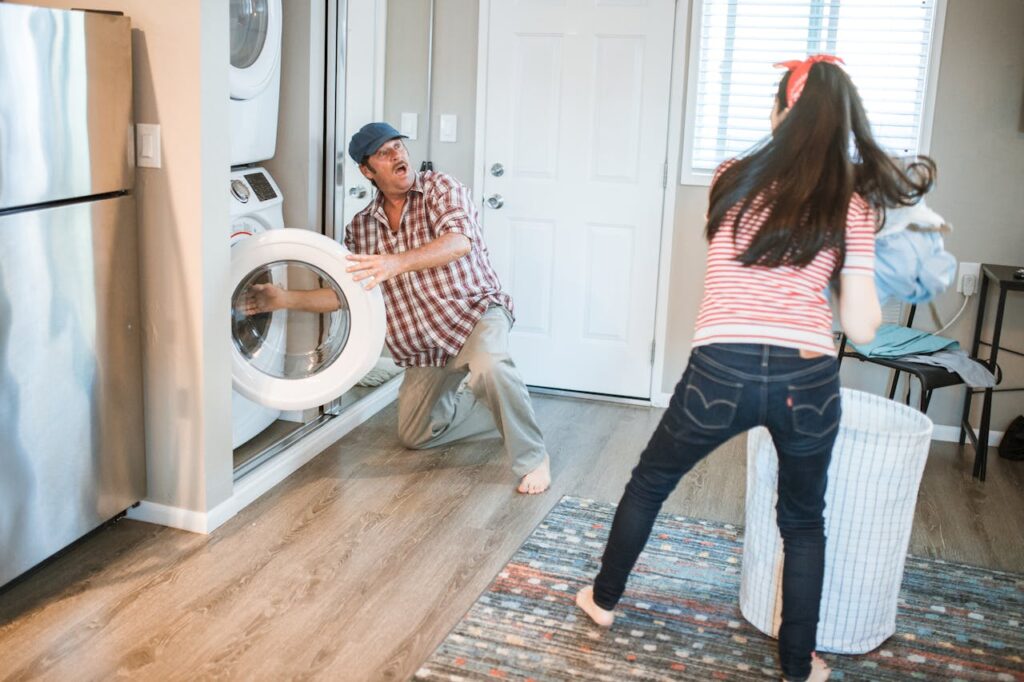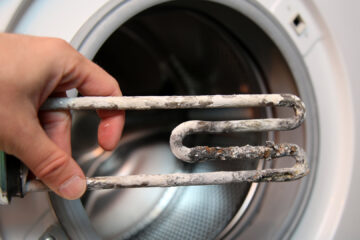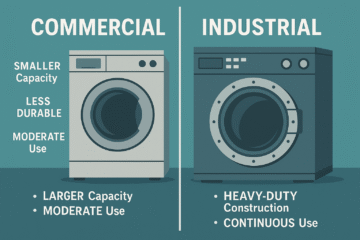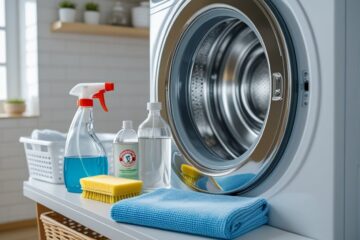Living with chronic back pain or hip arthritis means even simple daily tasks like laundry can become painful. Choosing the right washing machine type – front-load or top-load – can make a big difference in reducing strain. In this guide, we compare both options with chiropractor-approved ergonomic advice.

Quick Verdict
If bending is your main problem:
A top-load impeller type is often easier, as you can load/unload while keeping your back straighter.If reaching into deep tubs is your issue:
A front-load washer on a pedestal/stand (25–35 cm high) is best because the door sits at waist height.If hand strength or balance is limited:
Front-loaders (when raised) are easier to access, while top-loaders can be safer in tight spaces.
Why Laundry Hurts Your Back and Hips
Forward bending while loading/unloading.
Twisting with heavy wet loads.
Deep reaching into tubs or floor-level doors.
Carrying wet laundry without support.
Front-Load vs Top-Load: Comparison
| Factor | Front-Load | Top-Load (Agitator) | Top-Load (Impeller) |
|---|---|---|---|
| Reach/Posture | Best if raised; worst if on floor. | Moderate reach; shallower tub. | Deepest tubs, harder for short users. |
| Spine Neutrality | Excellent with pedestal. | Decent; some bending. | Variable; often requires leaning. |
| Hip/Knee Flexion | Low if door near waist height. | Minimal squatting. | May require leaning/tip-toe. |
| Wash Quality | Excellent, gentle on clothes. | Good but harsher on fabrics. | Balanced wash quality. |
| Cycle Time | Longer, efficient spin. | Shorter. | Short to moderate. |
| Water/Energy | Most efficient. | Least efficient. | Efficient. |
| Mold/Odor Risk | Higher, requires cleaning. | Low. | Low. |
| Space | Can stack with dryer. | Needs vertical clearance. | Same as agitator. |
Chiropractor’s “Fit Test” Before You Buy
Knuckle Test (Top-Load): Stand upright. Your knuckles should reach below the tub rim without bending your spine or standing on toes.
Door Height Test (Front-Load): Door center should be 80–95 cm from floor. Use a pedestal if needed.
Basket Staging: Keep laundry basket at hip height in front of the machine.
Grip & Controls: Doors/knobs should open easily without wrist strain.
Filter Access: Ensure you can reach filters without kneeling.
Setup Tips for Back and Hip Safety
Raise front-loaders on a 25–35 cm pedestal.
Use anti-vibration pads for stability.
Place machine with front clearance so you don’t twist.
Keep baskets on a bench or trolley at hip height.
Store detergents at waist-to-chest level.
Operating Technique
Hinge at hips, not spine.
Slide clothes, don’t lift mid-air.
Split loads into smaller batches.
Use quick cycles + high spin to reduce heavy wet loads.
Avoid floor-level baskets.
Best Features to Look For
Front-Load:
Pedestal compatibility
Auto-dose detergent
Drum light
High spin (1200–1400 RPM)
Reversible door
Top-Load:
Shallower tub depth
Soft-close lid
Pause-and-add function
Built-in water heater
Large, simple controls
Decision Matrix
| Situation | Best Choice | Setup Tip |
|---|---|---|
| Can’t bend, can raise machine | Front-load on pedestal | Basket at hip height |
| Short stature, deep tubs hurt | Front-load raised | Door center ~90 cm |
| Mild pain, no pedestal | Top-load impeller | Check reach depth |
| Tight space | Top-load | Keep detergent at waist height |
| Caregiver helps, fabric care needed | Front-load raised | Use high spin |
| Budget priority | Top-load agitator | Choose shallower tub |
Maintenance Tips
Wipe front-load gaskets dry after use.
Clean filters regularly.
Balance loads to reduce vibration.
Use proper detergent dosing.
FAQ
Q: Are front-loaders bad for backs?
Not if raised. A pedestal reduces bending by up to 60%.
Q: Which top-loader is easier on the back?
Agitator models are usually shallower and easier to reach into.
Q: What capacity should I choose?
Don’t oversize. Heavy loads increase strain.
Q: Are detergent pods better?
Yes, they reduce lifting heavy bottles.
Q: Can I stack machines?
Stacking saves space but puts one unit low. Side-by-side with pedestals is better.
Chiropractor’s Advice
“For chronic back pain or hip arthritis, keep the door or tub opening between mid-thigh and navel height, stage baskets at hip height, and avoid twisting. Small ergonomic changes can make laundry much easier.”
Conclusion
Front-load (with pedestal): Best for minimizing bending.
Top-load (shallow tub): Better if you can’t raise the machine.
The setup and your posture matter more than the brand.
About the Author
Dr. Venkatesh Mishra is the owner of VS Physiotherapy, Osteopath & Chiropractic Clinic in Lucknow. As a chiropractor and rehab specialist, he is dedicated to helping people with chronic pain, arthritis, and mobility challenges adapt their daily activities for less strain and more independence. His clinic combines physiotherapy, osteopathy, and chiropractic care to deliver evidence-based pain relief and long-term wellness.


